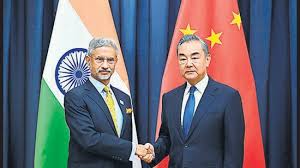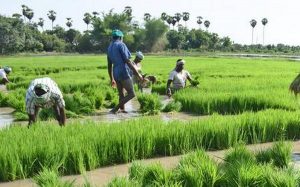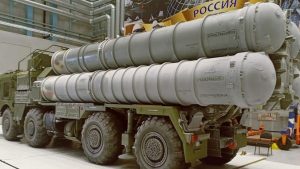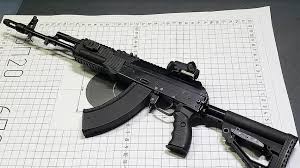Today’s Current Affairs: 8th July 2024 for UPSC IAS exams, State PSC exams, SSC CGL, State SSC, RRB, Railways, Banking Exam & IBPS, etc
Table of Contents
Shanghai Cooperation Organisation (SCO) Summit 2024:

The 2024 Shanghai Cooperation Organisation (SCO) Summit was concluded in Astana, Kazakhstan and brought together leaders from across the region.
- India played a prominent role, with the External Affairs Minister delivering the Prime Minister’s message that highlighted combating terrorism and addressing climate change as key priorities.
Key Highlights of SCO Summit 2024:
- Belarus has become the 10th member state of the SCO. The Indian External Affairs Minister met with Belarusian counterpart to strengthen bilateral ties.
- The 24th SCO Summit in Astana adopted the Astana Declaration and approved 25 strategic agreements on energy, security, trade, finance, and information security.
- Members of the SCO adopted the SCO Development Strategy until 2035, including resolutions on combating terrorism, separatism, and extremism, anti-drug strategy, energy cooperation, economic development, and cooperation in protected areas and eco-tourism.
- Commitments also included signing a memorandum to combat illicit drug trafficking and an interaction plan on international information security issues.
- India’s External Affairs Minister met the Chinese Foreign Minister on the margins of the SCO Summit in Astana, Kazakhstan.
- Both ministers emphasised the need for “complete disengagement” of troops and restoring peace along the Line of Actual Control (LAC).
- The two ministers agreed to expedite efforts through diplomatic and military channels to resolve remaining issues in Eastern Ladakh.
- The ‘Make in India’ initiative was highlighted as it has the potential to become a significant engine for global economic growth.
- India expressed openness to partnering with other nations, particularly those in the Global South, for capacity building and economic development.
- At the SCO summit, the External Affairs Minister of India urged the global community to isolate countries that harbour terrorists and condone terrorism.
- He emphasised the need to counter cross-border terrorism and highlighted the importance of combating terrorism as a foundational goal of the SCO.
- India has been proactive in enhancing its security-related cooperation within the SCO framework, particularly through the Regional Anti-Terrorism Structure (RATS), which focuses on security and defence issues.
- The Russian President emphasised the SCO’s role in promoting a fair, multipolar world order.
Bombay Stock Exchange : Status

The Bombay Stock Exchange (BSE) Sensex has crossed the 80,000 mark for the first time on 4th July 2024, hitting a new peak of 80,074 during intraday trades.
- The Sensex has doubled in the last 5 years, after taking 12 years to climb from 20,000 to 40,000.
- It has crossed its first 10,000 level in 2006, the 20,000 level in 2007, and the 40,000-mark in 2019.
- Sensex is a stock market index that tracks the performance of the 30 largest and most actively traded companies listed on the Bombay Stock Exchange (BSE) in India.
- A stock exchange is a centralised location where the shares of publicly traded companies are bought and sold. BSE is the oldest stock exchange in Asia established in 1875.
- The Sensex was launched in 1982 by the BSE.
- It is used by analysts and investors to track India’s economic cycles as well as the growth and decline of specific sectors.
- The Sensex is re-evaluated two times a year, one in June and the next in December.
- Another stock market index named Nifty 50 tracks the performance of 50 companies that are listed on the National Stock Exchange (NSE). It was introduced in 1996.
3D Hologram Technology:

Japan has introduced new yen banknotes equipped with 3D hologram technology to combat counterfeiting.
- The existing currency remains valid, with new bills gradually entering circulation through banks and ATMs to accommodate Japan’s cash-centric transactions.
- 3D hologram technology creates three-dimensional images that appear to have depth and motion without the need for special glasses.
- It uses principles of interference and diffraction.
- It uses lasers to record light patterns reflected from an object, producing a realistic holographic image that changes perspective as the viewer moves.
- These holograms are used for security in currency, authentication of products, and immersive displays in entertainment and education.
Global Conclave On Plastic Recycling And Sustainability:

The Global Conclave on Plastic Recycling and Sustainability (GCPRS) began yesterday at Bharat Mandapam, Pragati Maidan, addressing issues of plastic waste management, recycling, and sustainability to promote circularity.
- The Global Conclave on Plastics Recycling and Sustainability (GCPRS), organized by the AIPMA (All-India Plastics Manufacturers’ Association (AIPMA), gathers industry stakeholders to address critical issues in plastic use and recycling, showcasing innovative technologies and fostering collaboration for sustainable practices across sectors.
- Initiative: Project REPLAN (REducing PLAstic from Nature), Promotion of Circular Economy, EPR Portal for Plastic Packaging, Swachh Bharat Mission, Lifestyle for the Environment (LiFE) Movement
Producer Price Index: New Model

The DPIIT is finalizing a new model of the Producer Price Index (PPI) to better capture input prices in the economy.
- Producer Price Index measures the average change in prices received by producers for goods and services sold in the domestic market or exported.
- It includes two types: Output PPI for goods and services leaving production sites, and Input PPI for goods and services entering production processes.
- The new model of PPI aims to replace WPI due to biases in double counting of products, exclusion of exports/imports, and overlooking the service sector (55% of GDP).
- It has been shared with the IMF, and consultations are underway to transition from WPI to PPI, aligning with most G20 economies.
- The government is also considering changing the base year of the Wholesale Price Index (WPI) from 2011-12, with discussions ongoing with MoSPI and the National Statistical Commission.
Farmer Producer Organisations : Put For Public Comment

The draft National Policy on Farmer Producer Organisations (FPOs) has been put for public comment by the Ministry of Agriculture and Farmers Welfare
- Farmer Producer Organisations (FPOs) are voluntary collective entities formed by farmers to enhance their bargaining power and access to inputs, markets, and technology.
- They enable small and marginal farmers to pool resources, share risks, and collectively undertake farming and marketing activities.
- Currently, 5000 FPOs have been registered on the Open Network for Digital Commerce portal for selling the produce online.
- Key objectives of the proposed policy include to consolidate existing FPOs and establish 50,000 new FPOs, benefiting 2.50 crore farmers.
NIRMAN Scheme:

The Union Minister for Coal and Mines recently launched the portal “Noble Initiative for Rewarding Mains Aspirants of National Civil Services Examination (NIRMAN)”.
- Initiative for Rewarding Mains Aspirants of the National Civil Services Examination (NIRMAN) is a unique Corporate social responsibility (CSR) scheme by Coal India Limited (CIL) designed to support meritorious candidates from its operational districts.
- The NIRMAN scheme is tailored to provide financial assistance of ₹1,00,000 to candidates who have successfully cleared the preliminary round of the UPSC Civil Services and Forest Service Examinations in 2024.
- The eligible beneficiaries include those with an annual family income of less than ₹8 lakhs, and who are permanent residents of the 39 districts where CIL operates.
- This support extends to individuals from Scheduled Castes (SC) and Scheduled Tribes (ST), as well as female and third-gender candidates.
- The application process for NIRMAN is fully digital and facilitated through a dedicated portal.
Coal India Limited (CIL):
- It is a Govt of India-owned Maharatna company.
- It is the single largest coal producer in the world.
- It contributes to 85% of total domestic coal production and 75% of total coal-based generation.
Defence Production : Report

India recorded its highest-ever growth in indigenous defence production in value terms during Financial Year (FY) 2023-24, the defence ministry announced recently.
- As per the data received from all Defence Public Sector undertakings (DPSUs), other PSUs manufacturing defence items, and private companies, the value of defence production in the country has gone up to a record-high figure of ₹1,26,887 crore during the Financial Year (FY) 2023-24.
- It reflects a growth of 16.7% over the defence production of the previous financial year. The value of defence production in FY 2022-23 was ₹1,08,684 crore.
- Of the total value of production in 2023-24, 2% was contributed by DPSUs and other PSUs and the remaining 20.8% by the private sector.
- The value of defence production has grown by more than 60% since 2019-20, when it stood at ₹79,071 crore.
- India produces a raft of weapons and systems, including the Tejas light combat aircraft (LCA), different types of helicopters, warships, tanks, artillery guns, warships, missiles, rockets, and a variety of military vehicles.
- Defence exports also reached a record high of Rs 21,083 crore in FY 2023-24, reflecting a 32.5 percent growth over the previous fiscal’s Rs 15,920 crore.
- India is currently exporting military hardware to around 85 countries.
Kalashnikov AK-203 Assault Rifle:

The Indo-Russian Rifles Private Limited (IRRPL), a joint venture between India and Russia, has successfully delivered 35,000 AK-203 Kalashnikov assault rifles to the Indian Army.
- AK-203 Rifle is a modern firearm originating from Russia, designed by the renowned engineer Mikhail Kalashnikov between 2007 and 2010.
- It is a gas-operated, magazine-fed, select-fire assault rifle.
- It is a version of the AK-200 rifle chambered for the 62x39mm cartridge used in the Indian Army.
- The weapon has the traditional advantages of Kalashnikov assault rifles: reliability and ease of maintenance.
- These AK-203 rifles are produced in India using proprietary Russian technologies and certified equipment, ensuring high product quality and adherence to specifications.
- It will be manufactured by Indo-Russian Rifles Private Limited (IRRPL).
- IRRPL is a joint venture between India and Russia, set up in 2019 to produce AK-203 rifles in the Korwa Ordnance Factory in Amethi district, Uttar Pradesh.
- The joint venture plans to ensure 100% localisation of the production of AK-203 rifles in India.
- India is the first country outside Russia which has started the production of the AK-200 series assault rifles.
Features of AK-203 Rifle:
- Weighing 3.8 kg, this rifle measures between 880 and 940 mm in length with the stock extended, while its barrel is 415 mm long.
- Its mechanism is based on a gas-operated action with a rotating bolt, allowing a firing rate of approximately 700 rounds per minute.




